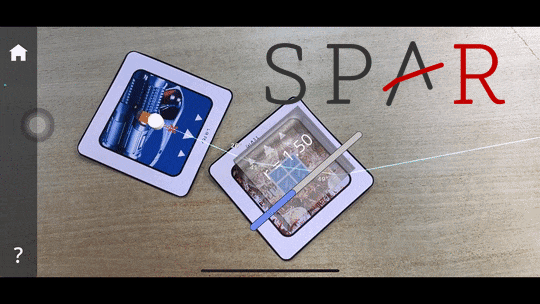Description
SPAR - AR for Light Physics Experiment
Introduction
SPAR seeks to facilitate the classroom and remote learning environment by visualising light energy experiments in an Augmented Reality (AR) mobile application. Explore the basics of light reflection and refraction and understand why and how light behaves.
Problem
The COVID-19 pandemic has shifted the classroom learning environment to online and remote learning avenues. Social distancing, split-class arrangements and frequent equipment sanitisation have made it challenging for physical lab sessions to be carried out as easily as before. Students and teachers may struggle to keep up with completing subject material that involves physical lab sessions in this period.
In the post-COVID era, it is hopeful that the introduction of take-home labs, using AR technology aided with image tracking using simple cards, can help to stimulate an innovative and interactive concept of self-learning and experimentation for students.
Solution
Our solution tackles the problem in 3 ways:
- Conducts the same lab experiments virtually without access to the necessary equipment
- Reduces the cost of physical materials and transport
- Gamifies lab lessons to make them more interactive and interesting
Technology
Augmented Reality
Use of AR to visualize tools for light experiments onto real-space
Light Physics
Mathematical equations implemented in code for realistic light-physics simulation
Image Tracking
Use of Image Tracking for experiment setup





